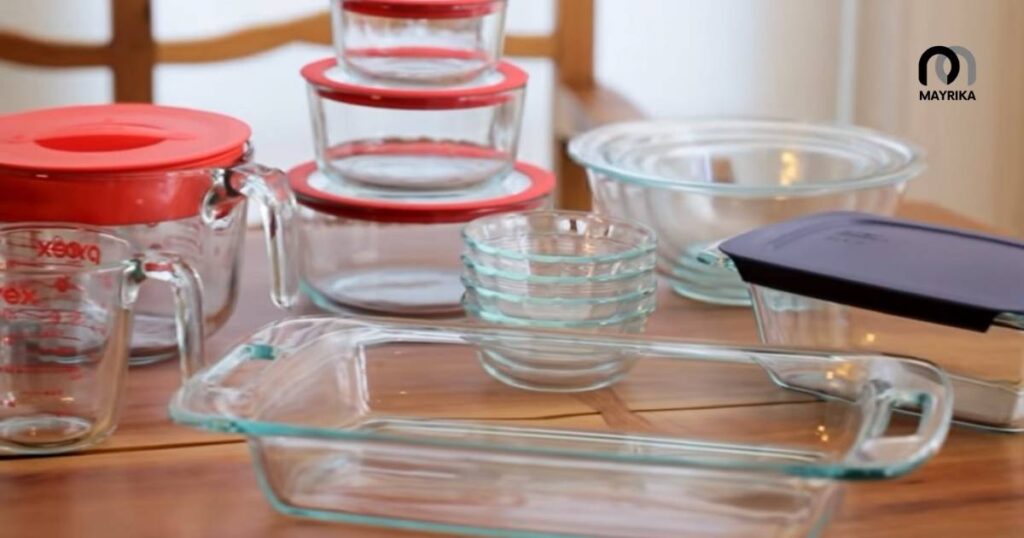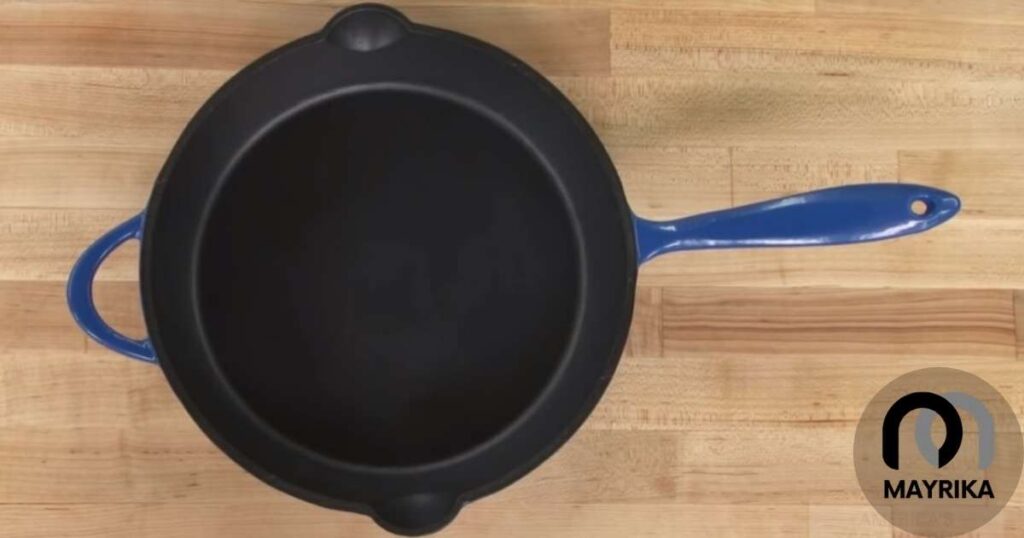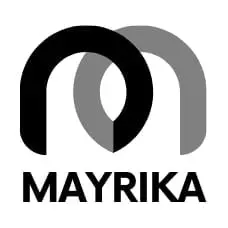Choosing the right cookware is an important decision that will affect your cooking experience. Non-reactive, or metal, cookware is an excellent option for those who prefer to avoid chemical reactions with acids and foods in their dish.
On the other hand, reactive pans are made of copper or aluminum. They can be used for sautéing vegetables or frying eggs without altering the taste.
Non-reactive vs reactive cookware: which one should you choose?
There are two types of cookware: non-reactive and reactive. Non-reactive cookware is typically made out of materials like stainless steel, cast iron, or anodized aluminum.
Reactive cookware usually contains a metal such as copper or carbon steel that reacts with acidic foods to produce new flavors and textures.
Professional chefs more often use Non-reactive cookware for its ability to withstand high heat without warping.
At the same time, reactive metals are commonly found in home kitchens because they can be less expensive than their non-reactive counterparts.
However, some people believe that using a reactive metal pan will give food better flavor and texture due to the reactions between acids in cooked food.
What is nonreactive cookware?
According to Wikipedia, non-reactive cookware “refers to pans that will not react chemically with the food items being cooked.” Given this definition, it’s safe to assume that most modern kitchenware is suitable if it isn’t tinfoil.
It’s essential to determine what surfaces the pots or pans are made from copper, aluminum, stainless steel, porcelain-enameled cast iron, and American Ironstone.
The surface needs to be non-porous and without seams to not react with the foods you’re cooking.
It should have an interior wok-style base that may be subject to contamination if you stir sauces while cooking over high heat on a gas stovetop.
Hot, soapy water only is sufficient for cleaning most nonstick surfaces (but don’t use an abrasive cleanser).

The most common non-reactive cookware
The most common nonstick coatings are made from titanium. However, there are various other materials used in specialized equipment like woks and crepe pans.
Stainless steel pans
As one of the non-reactive cookware types, stainless steel pans are chemically stable. They will not react to acidic or alkaline foods like other metals such as aluminum.
For anyone looking to purchase a new set of pots and pans- from a three-piece set to a full complement of high-end kitchen tools-stainless steel is the way to go.
In addition, those who already have stainless steel can rest assured that it will provide decades worth of use with just minimal care.
But remember: It’s essential that you “season” your pan before cooking on it!
Tin pans
There are many choices for non-reactive cookware. “Tin” pans and pans are made out of other metals, such as glass or ceramic.
Tin is worth mentioning because it has ancient roots in cooking, and sailors relied on their tin pots for many years without knowing that it was very good at preventing food from reacting with other elements.
It’s only recently begun to understand the process, and we learned why tin works so well.
Tin became a popular choice among those who want to guard themselves against much more expensive metals like copper or stainless steel, which can react dangerously.
But because of its relative affordability and effectiveness in preventing food from reacting with acidic agents while also allowing heat to transfer freely.
Glass cookware
The prevalence of glass cookware in the market comes from its practicality and versatility. It’s cheaper and easier to manufacture than wood or stainless steel. Yet, it can be put into a dishwasher or microwave oven.
This is not the case with cast iron skillets, which require seasoning before they are washed properly.
The downside of such versatility is that heat can sometimes transfer faster through glass than other materials, making it more difficult to control cooking temperatures exactly as you might want for certain recipes such as delicate sauces or desserts.
Glass also doesn’t work well for deep frying because its temperature changes begin when submerged in oil.
What is reactive cookware?
Reactive cookware, also known as coated cookware, makes cooking with any pan easier. It is usually just a metal pan that has been sprayed with paint or enamel and then baked at 900-1200 degrees Fahrenheit (or another high heat) for 30 minutes.
The coating prevents food from sticking to the surface. It allows it to release smoothly, which reduces the time needed for scrubbing in between washings.
The coating also prevents pans from developing rust or chipping and holds colors well even when overheated.
The high temperatures used for reactive coatings ensure an even distribution of the paint and offer superior insulation properties to glass, ceramic, and aluminum. Each of these surfaces will heat up differently.

The most common reactive cookware
The Most Common Reactive Cookware includes aluminum (which can react with acidic foods), and cast iron (again, potential reaction with foods containing acids like vinegar or citrus).
Copper pots and pans (reaction with high levels of acid content in foods like tomatoes). Stainless steel cookware (interaction may cause concern) and nonstick surfaces (discontinue use if the surface starts peeling off).
Iron is not reactive by itself, but it can release some components into the food during contact, increasing the acidity – a prime example being at a steaming point.
Cast-iron cookware
Generally, cast-iron cookware is the most common type of reactive cookware. Reactive metals are unhealthy for cooking because they react with acids.
If the food’s juices leak out onto the metal, it will form an oxidized layer on the surface of the food (“metal mouth”).
Unlined copper cookware
Copper is one of the most reactive metals and may react with acidic foods to produce changes in both color and flavor. Many copper pots are lined, but unlined copper cookware has some unique advantages.
Unlined copper cookware can add varying degrees of flavor to food because it interacts with acidic ingredients when using certain techniques, such as cooking tomato sauce or simmering rice.
Adding other metal alloys to the surface gives the resulting sauce or rice dish more body or consistency without adding undesirable flavors. Unlined cookware will season naturally as well so that delicate sauces won’t taste metallic after a while.
Aluminum cookware
Aluminum is cheap and durable, plus it distributes heat evenly. No other metal can produce the same effect as aluminum when searing meats or vegetables on high heat.
But the chief reason chefs use aluminum cookware is flavor. The slightly metallic taste of the food seems to “taste right” to many people.
And desirably caramelizes leeks and onions into a light brown color while preserving their natural fragrance wonderfully as well!
To summarize: Aluminum will remain your best choice if you’re looking for an economical cooking tool with excellent heating properties and that doesn’t alter an item’s original flavor too much.
However, we have not researched what happens to different types of flavors yet.
When to use a nonreactive pan?
Here is a list of food that is usually cooked in non-reactive cookware:
- Omelets and Eggs;
- Fried foods (e.g., fried eggs, French fries);
- Meals made with tomatoes or tomato sauce (e.g., macaroni and cheese, lasagna);
- Pickled vegetables (e.g., dill pickles);
- Sauerkraut or other fermented vegetables, such as some types of sauerkraut juice, when served hot;
- Buckwheat pancakes should be made on a griddle rather than a stovetop to prevent cross-contamination from reactive dry cooking utensils.
When to use a reactive pan?
Reactive pans are great for cooking any dish that requires quick cooking, searing, or frying.
If you’re trying to cook anything that has a pretty thick coat of sauce, the heat will get to the bottom and sides but may not necessarily be able to reach the liquid on top.
We don’t like them because they never have reasonable control over food, and we end up with burnt foods if there is too much in the pan all at one time.
They work better for slow-cooked dishes, of course, and they are fantastic for sauces that need longer cooking times or quantity recipes with loose physical shapes such as curries, stews, risotto, and pasta.
Non-reactive vs reactive cookware
If you’ve ever wondered about the difference between nonstick and stainless steel, we have an answer for you.
Nonstick pots and pans are coated with a chemical compound applied to the surface of metal before it’s cooled off in liquid form.
When heated up on your stovetop or oven, these coatings provide a slick surface to help food slide around without sticking to anything underneath it. However, there can be some drawbacks when cooking with this type of cookware.
Because they’re made from plasticized chemicals like polytetrafluoroethylene (PTFE), substances such as oils will break down into particles called PFOA which eventually make their way back out.
Final Thoughts
We hope you’ve found this non-reactive vs reactive cookware article helpful and informative. If so, please share it with your friends or family who might be interested in the topic!
Non-reactive cookware is an investment that will last a lifetime. Think about what type of cookware you want to use for your dishes.
Then, compare the two types in terms of quality, safety, price, and durability before making any decisions.
Read Next: How To Restore Circulon Cookware?
FAQs
-
Is enameled cast iron non-reactive?
Enameled cast iron is non-reactive. It will not react with acidic foods. In contrast, cast iron reacts to acidic foods.
-
Is All-Clad non-reactive cookware?
All-Clad cookware is made from a special kind of stainless steel that is considered non-reactive.
-
Is plastic a non-reactive container?
Yes, plastic is a non-reactive container. Non-reactive containers are those which do not chemically react with the food.
-
Is nonstick cookware non-reactive?
Nonstick pans are nonreactive because they are made with a coating of polytetrafluoroethylene.
-
What is an example of a non-reactive pan?
A non-reactive pan is a cooking pan made from stainless steel.
-
How do you know if a pan is non-reactive?
Non-reactive cookware is made of materials that will not react with acidic or alkaline foods. This means that the cookware will not release any harmful chemicals or toxins into your food.
There are a few ways to determine if a pan is non-reactive. One way is to look at the material the pan is made of.
Stainless steel, enameled cast iron, and glass are all considered non-reactive materials.
